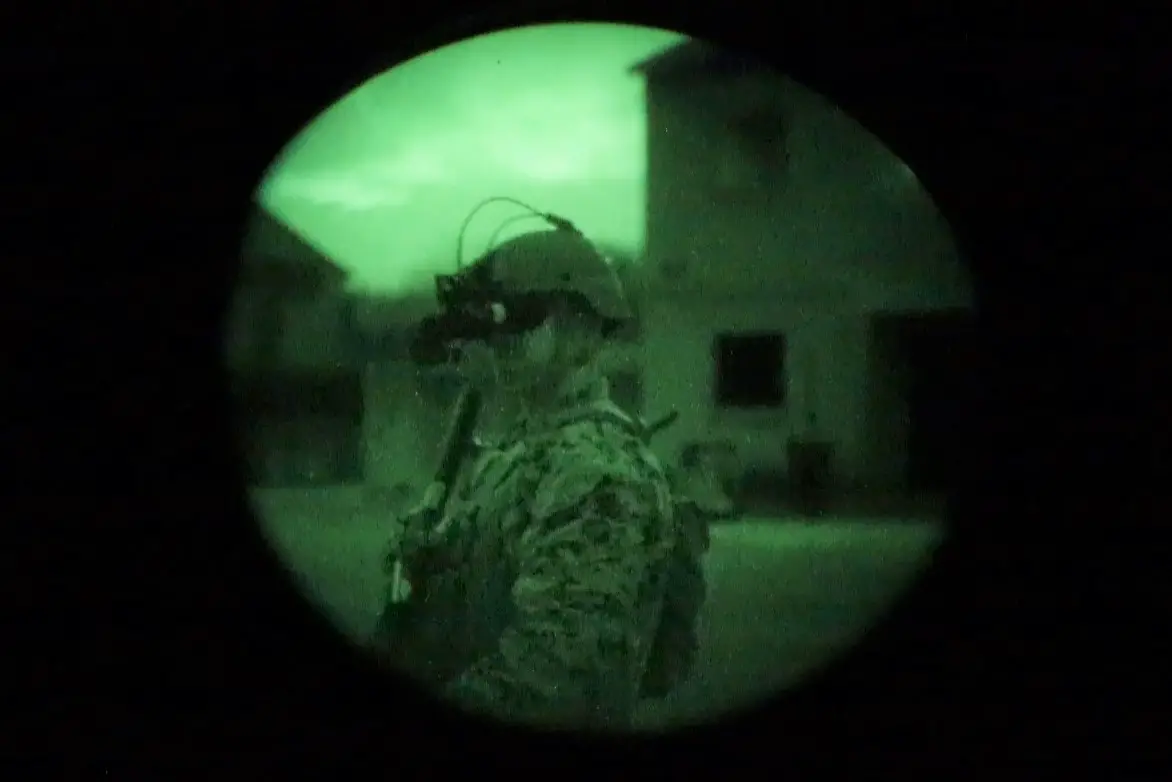Last January, a group of Marines assessed next-generation night-vision goggles in a realistic setting. Matt Gonzales, U.S. Marine Corps Systems Command, reports.

A view of a Marine through the Squad Binocular Night Vision Goggle at night (Picture source: U.S. Marine Corps/Sgt. Kirstin Spanu)
The Squad Binocular Night Vision Goggle is a lightweight night vision system comprising an image-intensifier binocular and enhanced clip-on thermal imager. The SBNVG is more capable than the AN/PVS-14—the legacy system that lacked the performance characteristics of the newer technology. A helmet-mounted system, the SBNVG provides increased depth perception, improved clarity and a thermal-imaging capability to detect targets in extreme darkness or through battlefield obscurants. Marines can use the goggles to operate vehicles at night, move through dark buildings or tunnels, and engage targets after sunset.
In September 2019, the Marine Corps awarded a contract to Elbit Systems of America—formerly Harris Corporation Night Vision Business—in Roanoke, Virginia, for the SBNVG system. During a Limited User Evaluation, MCSC facilitated the testing and assessment of the equipment to ensure its usability, reliability and effectiveness.
The SBNVG LUE comprised three separate evaluations, enabling Marines to test the system in realistic scenarios and environments similar to those on the battlefield. During one exercise, a group of Marines from the Basic School aboard Marine Corps Base Quantico, Virginia, converged upon a Military Operations on Urbanized Terrain training facility to evaluate the SBNVG in low-light conditions. The environment mirrored the sights, sounds and smells of a Middle Eastern town. The location comprised replications of a hotel, fish market, trade school, clothing store, police station and United States Embassy building. Some participants donned chemical, biological, radiological, and nuclear protective equipment and helmets with the SBNVG attached. Others served as role players dressed in attire specific to that region of the world.
At sundown, Marines participated in a scenario during which they leveraged the SBNVG to scan multi-level buildings to secure a position, rescue friendlies or capture hostile targets. They searched for targets in all directions and at different heights, adjusted the focus as necessary and navigated pitch-black sewer tunnels with restricted height.
In a separate, live-fire exercise, Marines used the SBNVG with the M27 Infantry Automatic Rifle mounted with an M7 Rifle Combat Optic and a Mini-Integrated Pointer Illumination Module. This test event helped to identify performance, interface or user impacts encountered during nighttime small arms engagements.














